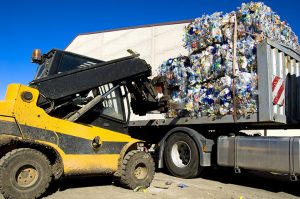 Parties working to reopen an idled plastics recovery facility in Maryland are going back to the drawing board after a possible investor withdrew from talks.
Parties working to reopen an idled plastics recovery facility in Maryland are going back to the drawing board after a possible investor withdrew from talks.

Resource Recycling keeps you on top of critical industry trends and brings unparalleled analysis of the evolving materials stream, market turbulence, policy trends and more.
Sign up for our free weekly e-newsletters to receive the latest news directly.
 Parties working to reopen an idled plastics recovery facility in Maryland are going back to the drawing board after a possible investor withdrew from talks.
Parties working to reopen an idled plastics recovery facility in Maryland are going back to the drawing board after a possible investor withdrew from talks.
 The Home Depot will pay nearly $28 million in a California settlement involving disposal of household hazardous waste, electronics, batteries and intact customer information.
The Home Depot will pay nearly $28 million in a California settlement involving disposal of household hazardous waste, electronics, batteries and intact customer information.

Last year presented an upheaval in the global recovered plastics market, and the impacts continue to roll in. Three experts recently shared their thoughts on the specific causes of the volatility.
 Struggles at facilities on both sides of the country demonstrate how local programs can be left in the lurch when nearby sorting capacity constricts.
Struggles at facilities on both sides of the country demonstrate how local programs can be left in the lurch when nearby sorting capacity constricts.
 Materials diversion was celebrated around the world on Sunday, when the first Global Recycling Day was observed with events in several cities and statements released online.
Materials diversion was celebrated around the world on Sunday, when the first Global Recycling Day was observed with events in several cities and statements released online.

The refillable bottle produced by O-I is offered in two sizes. Photo courtesy of Oregon Beverage Recycling Cooperative.
A glass bottle reuse program in Oregon has taken major steps forward, with glass giant Owens-Illinois creating a standardized refillable bottle for breweries and long-term plans for a wash facility moving forward.
 Mixed-paper has hit an all-time price low, with each ton trading for just $5. Downward pricing has also been seen with other fibers, but plastics have shown increasingly strong values lately.
Mixed-paper has hit an all-time price low, with each ton trading for just $5. Downward pricing has also been seen with other fibers, but plastics have shown increasingly strong values lately.
 An industry-funded ocean plastics prevention initiative has received support from a number of new partners, including brand owners, a chemicals giant and an intergovernmental group.
An industry-funded ocean plastics prevention initiative has received support from a number of new partners, including brand owners, a chemicals giant and an intergovernmental group.

Officials in China have announced an enforcement campaign to implement the country’s new import restrictions.
 The group that runs Oregon’s container deposit program announced it will donate unredeemed deposit money to charitable purposes if the redemption rate for containers drops below 80 percent.
The group that runs Oregon’s container deposit program announced it will donate unredeemed deposit money to charitable purposes if the redemption rate for containers drops below 80 percent.
